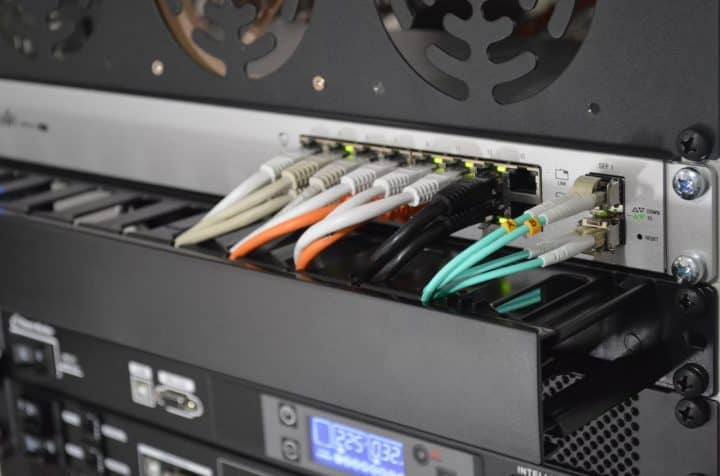It is an important question to ask how much power do data centers consume. Our planet is facing devastating consequences due to the negligence of big corporations when it comes to the price of their profits. Profits are always the number one priority and there is always someone else to blame for the aftermath. It is always easier to blame regular people for using plastic straws than to admit that one private jet pollutes more than any family can. We need to rethink how we get our energy if we want this planet and life on it to stay intact.
Unfortunately, we still can’t let go of fossil fuels for energy and plastics for everything else. However, steps can be made in the right direction and it is possible to make the right changes now. Data centers are one of the leaders in electricity consumption, but we can make positive changes. With the answers in this article, you will be able to understand the power consumption of data centers.
More than you think
Many people think that if something is digital or runs on electricity it is squeaky clean without any carbon footprint. However, electricity also needs to be generated from something, it is written in the second law of thermodynamics. The alternating current we use is made with the help of heating engines, and heat needs to come from somewhere.
This heat can either be produced from burning something, fossil fuels, or nuclear reactions. Whichever the case, the raw energy can’t be tapped into with an ordinary plug, a 3-phase power plug is necessary to harness the electricity. These types of plugs are necessary for big facilities, including data centers, which is one of the signs of massive power spending.
Calculations
Doing precise calculations for the exact spent power is tricky, but we have some good estimates. Many reports agree that data centers consume over 90 billion kilowatt-hours of electricity annually. There are many reasons why this number can be on both the lower and the upper side of power consumption.
Data centers require constant power for the servers which perform many tasks in the blink of an eye. These powerful machines heat up over time and they can’t go on heating up forever. Now come the costs that are associated with cooling these powerful machines. Add all of this up to emergency generators, and there you have the reason behind the numbers in billions.
Comparison
In order to grasp this huge number, it would be useful to compare it to some other facts. The average household in the US consumes 10 715 kilowatt-hours (kWh), which is not even close to a million kWh. If you think that reducing your own carbon footprint will do anything for the environment then forget it.
Carbon footprints are made to shift the blame to the consumer, not the actual big spenders of power. It is estimated that all of the power centers consume 3% of the world’s entire electricity production annually. This is bigger than many countries, not just the small ones, it is even more electricity than the entire UK consumes.
Optimization
It is possible to use green sources of energy and reduce their enormous carbon footprint. As tech gets more and more integrated into our daily lives, data centers grow every day. One of the best options would be to use solar energy to power the data center. Besides going solar, there are even more exciting ways of producing energy with the help of microorganisms.
Data centers should also be built in a more efficient manner so they can be cooled more naturally and efficiently. Again, nature has its own excellent ways of cooling a place, just think about anthills. One of the greatest designers, Buckminster Fuller, always drew inspiration from geometry and nature to produce more efficient designs.
Green marketing
One of the main problems of digital technology is the thought of it being purely green. For example, paper is worse than going digital because you are cutting down trees. And yes, white paper is not good for the environment, but it is important to compare it adequately. Crypto suffers from this problem because people just think it is all digital.
However, running the blockchain requires a serious input of energy, again, bigger than in some countries. It is very important for data centers to be transparent about how they power their centers. Greenwashing is a serious problem with tech now, and let’s not even get started with electric cars and how they are greenwashed.
The future
We already have the technology and the ability to produce energy in an environmentally-friendly manner. The main problem is that implementing this technology costs money and it will make other jobs obsolete. The big corporations really do not like the thought of them losing their power and money, so they change only when they can make more money.
In order to make positive changes, it is very important not to fall for propaganda spread by big corporations. They will always tell us to be careful and that it is our fault for spending the resources of this earth, but let’s be real. Unfortunately, we can’t do much here, we can only spread the truth about energy consumption and stop believing their lies for now.

Data Center close up of cables – how much energy do data centers use, and how much will they use in future?
It is very important to ask yourself big questions, especially the ones regarding the well-being of this planet. Data centers are not the source of everything evil in this world, they are nowhere near close to that. Data centers consume a lot of power, but so do many other things, and that is how big corporations want it to be. With this article, you can understand the numbers and the situation regarding green alternatives for electricity production.
It is very important to keep this knowledge and educate yourself more on this subject and spread the truth about it. It is unfortunate that only the ones with deep pockets are the ones who can make any serious change in this world. However, we must not give up on these goals of greener energy and better data centers. With this understanding, changes will come sooner or later, we just need to make sure it happens sooner rather than later.


Leave A Response